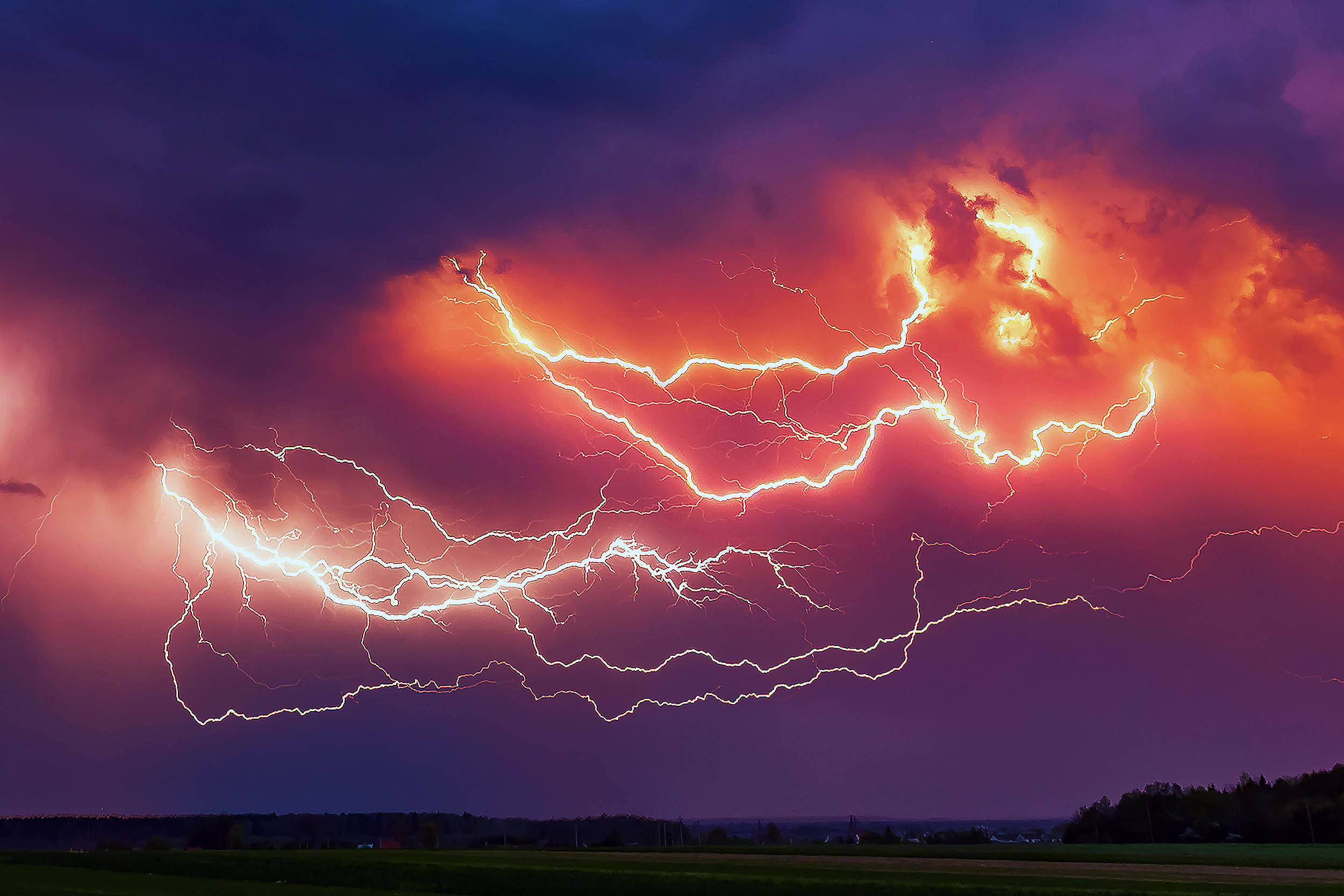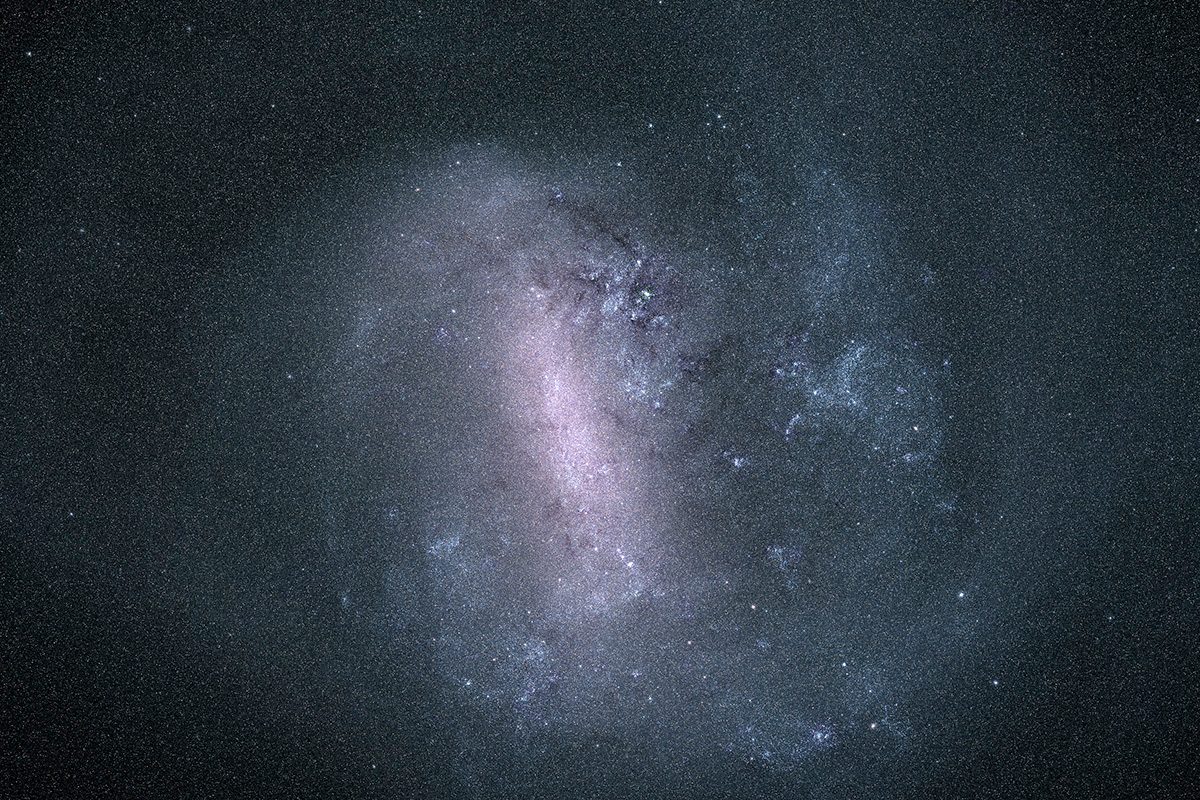Astronomers have added one more piece to the puzzle of how early in the Universe life could have emerged, and whether or not life could exist beyond our Galaxy.
The James Webb Space Telescope has detected organic molecules – the building blocks of life – frozen in ice around a young star in a neighbouring galaxy.
More on life beyond Earth
Scientists say the discovery could reshape our understanding of how the chemical ingredients for life are spread throughout the Universe.
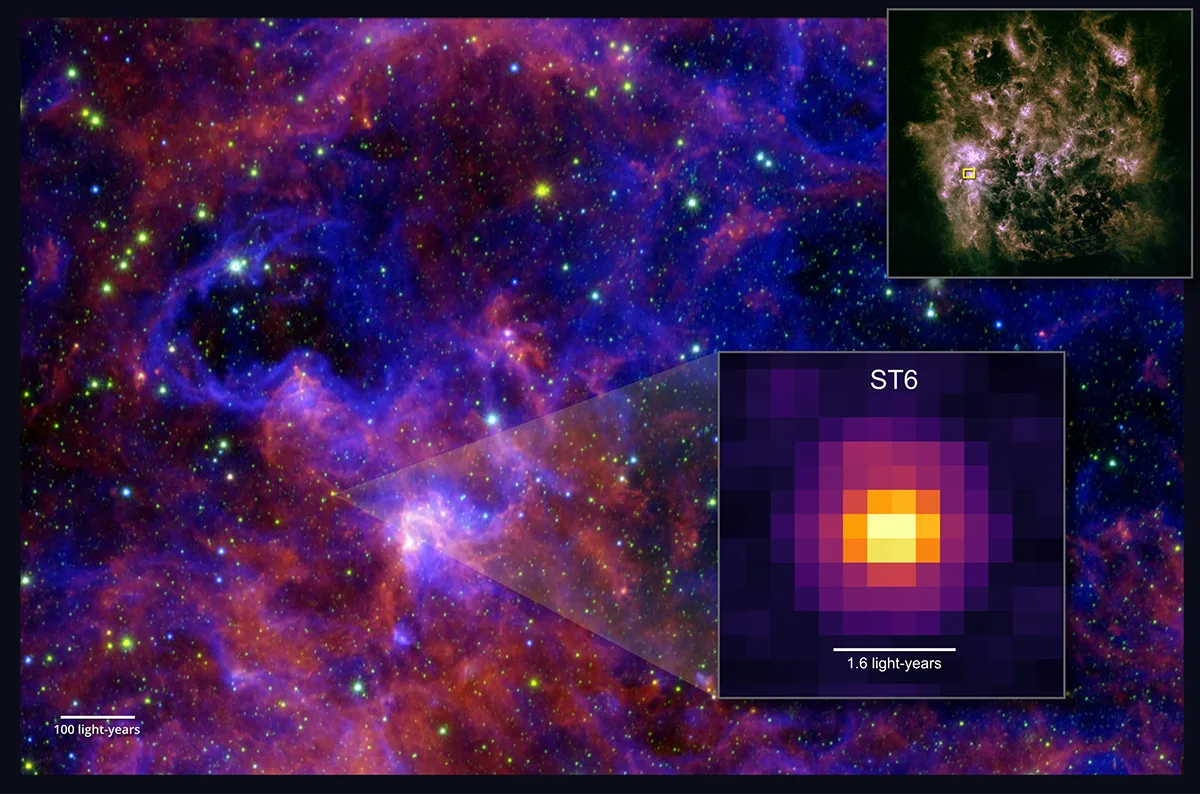
What Webb found
The Webb Telescope has detected organic molecules with more than six atoms frozen in ice around ST6, young star in a galaxy beyond the Milky Way.
What makes the James Webb Space Telescope such a vital tool for exploring the Universe is its infrared vision, which can be used to peer deep into space and observe objects not visible to the human eye.
Webb’s Mid-Infrared Instrument (MIRI) found five different carbon-based compounds around the star, which is located in the Large Magellanic Cloud.
This is a satellite galaxy of our own Milky Way, and is so close it can even be seen with the naked eye from the Southern Hemisphere.
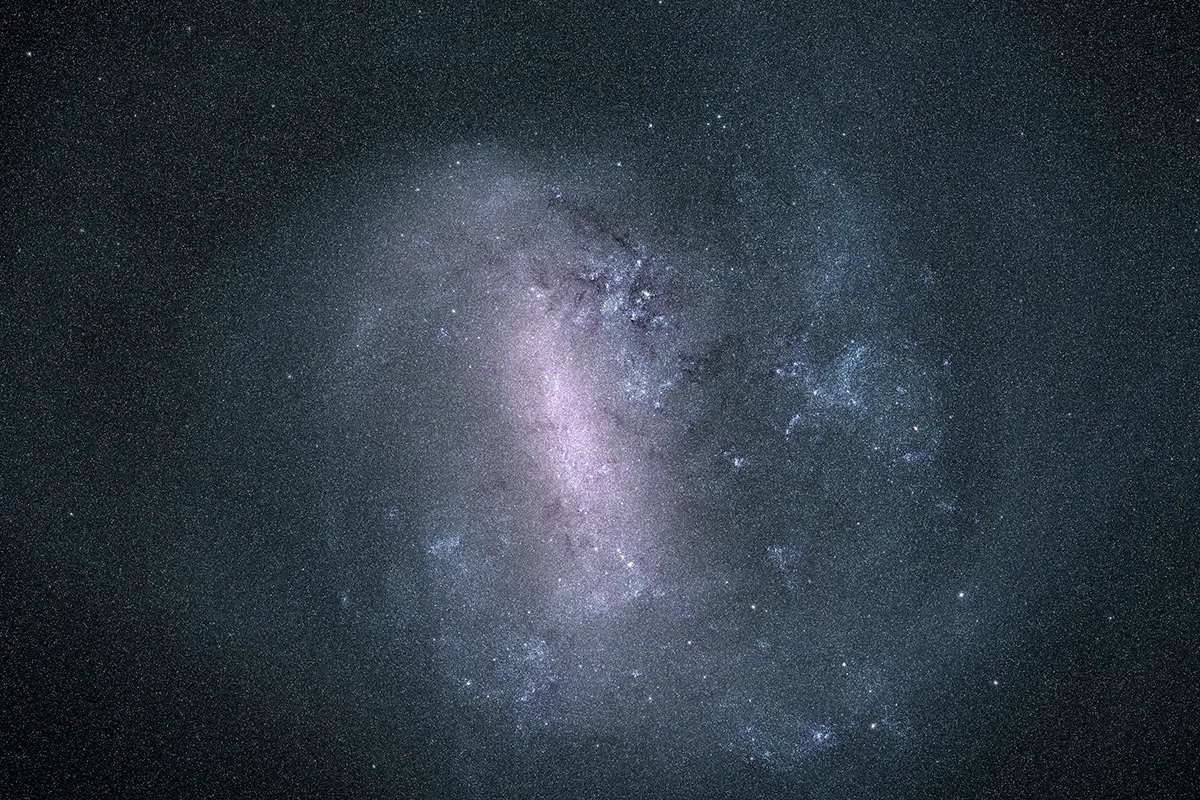
The study was led by University of Maryland and NASA research scientist Marta Sewilo, and published in the Astrophysical Journal Letters.
Many of the five ‘complex organic molecules’ found around the star can be found on Earth.
That includes methanol and ethanol (common types of alcohol), methyl formate and acetaldehyde, and acetic acid (the main component of vinegar).
In fact, acetic acid has never been definitively detected in space ice before.
Ethanol, methyl formate and acetaldehyde represent the first detections of these complex organic molecules in ices outside the Milky Way galaxy.
The team also analysed light from the star and found signs of another complex organic molecue.
That’s glycolaldehyde, a sugar-related molecule and precursor of more complex biomolecules, like components of RNA.
But the team say further study is needed to confirm that detection.
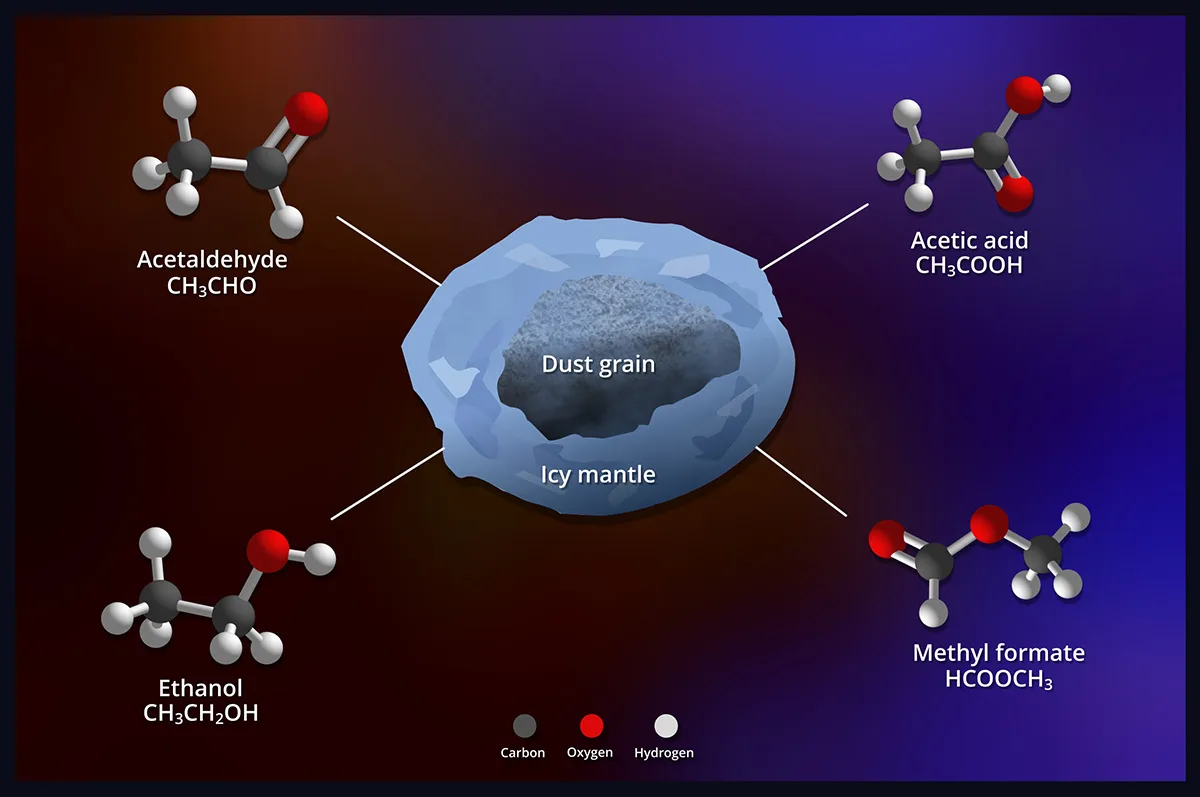
Why this is big news
These molecules were found in very challenging environments which, say the team, speaks volumes for Webb’s unprecedented ability to tease out groundbreaking discoveries in far-flung corners of the Universe.
“It’s all thanks to JWST’s exceptional sensitivity combined with high angular resolution that we’re able to detect these faint spectral features associated with ices around such a distant protostar,” says Sewilo.
“The spectral resolution of JWST is sufficiently high to allow for reliable identifications.
“Before Webb, methanol had been the only complex organic molecule conclusively detected in ice around protostars, even in our own Galaxy.
“The exceptional quality of our new observations helped us gather an immense amount of information from a single spectrum, more than we’ve ever had before.”
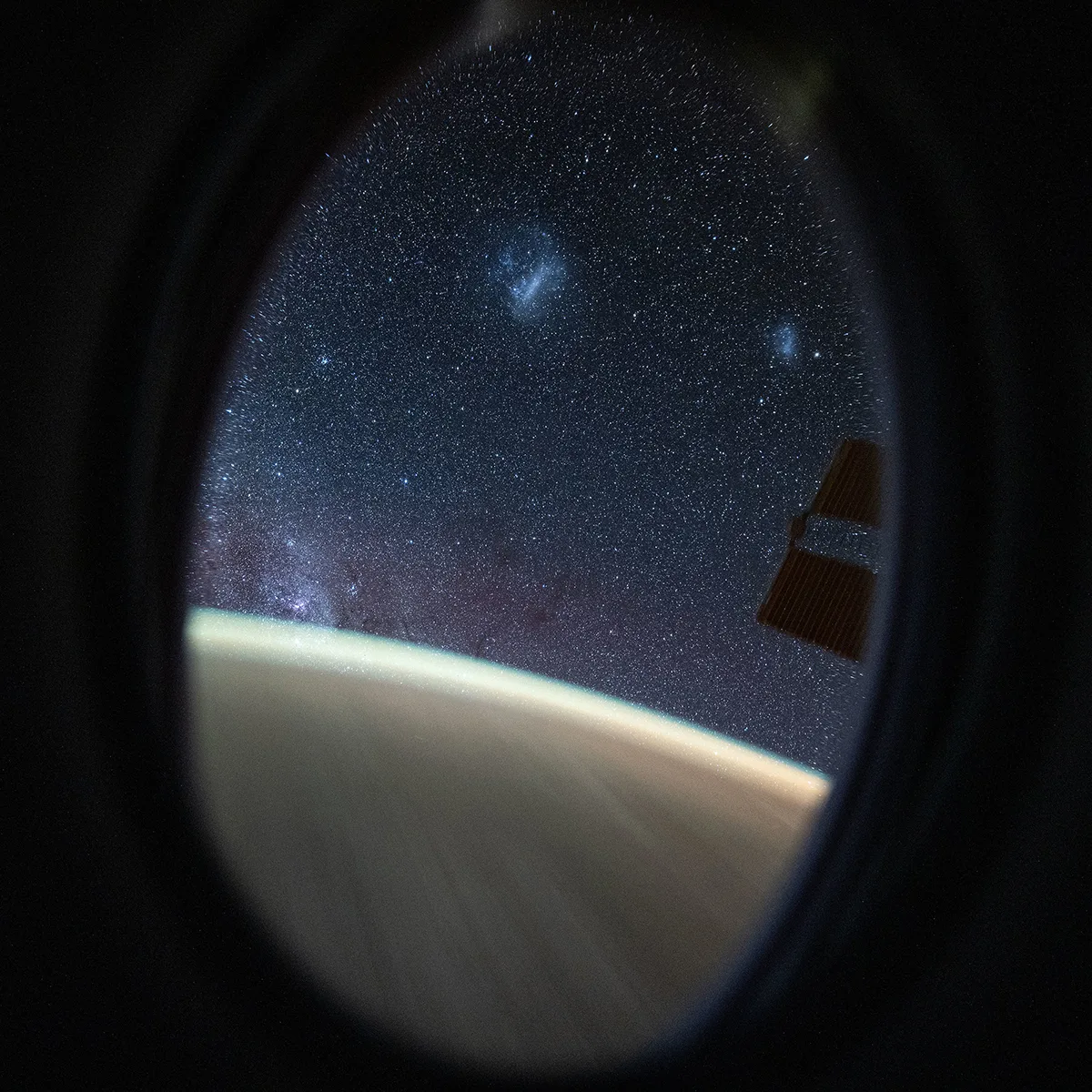
The Large Magellanic Cloud is 160,000 lightyears away, and scientists use it as a sort of natural laboratory for studying star formation under conditions similar to the early universe.
“The low metallicity environment, meaning the reduced abundance of elements heavier than hydrogen and helium, is interesting because it’s similar to galaxies at earlier cosmological epochs,” Sewilo says.
“What we learn in the Large Magellanic Cloud, we can apply to understanding these more distant galaxies from when the universe was much younger.
“The harsh conditions tell us more about how complex organic chemistry can occur in these primitive environments where much fewer heavy elements like carbon, nitrogen and oxygen are available for chemical reactions.”
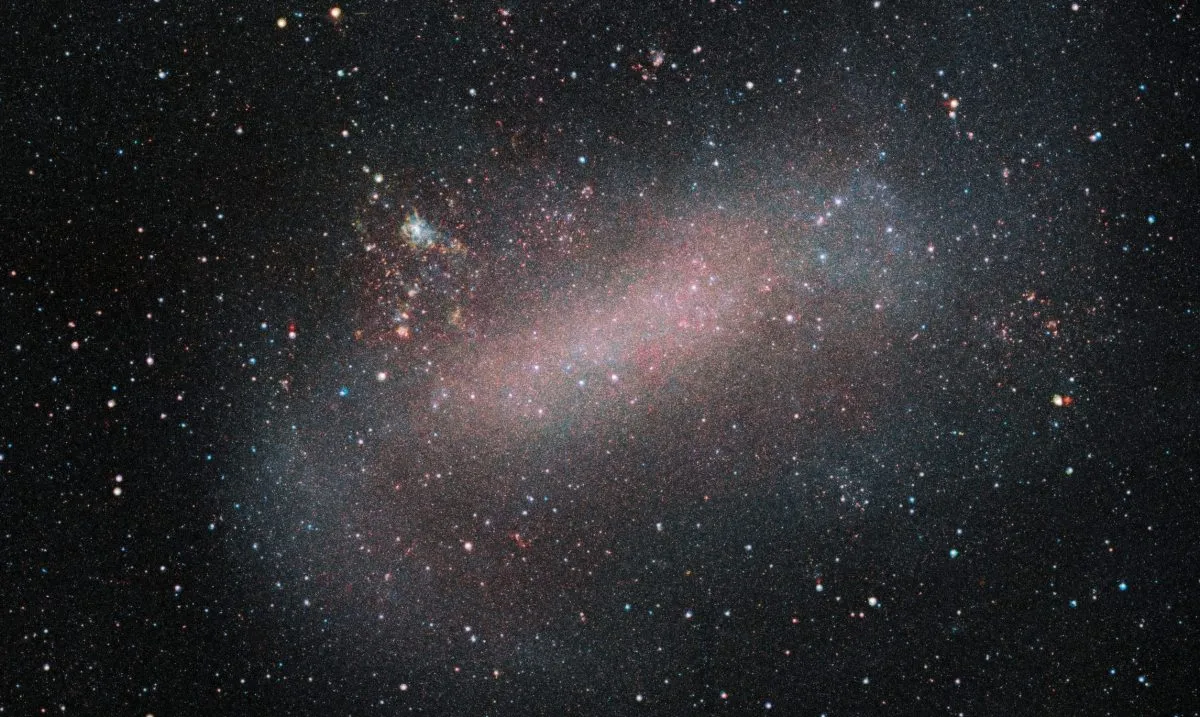
Evidence of the robustness of life
Study co-author Will Rocha from Leiden University in the Netherlands, says complex organic molecules can form in gas and ice on interstellar dust grains. After their formation, ice molecules can be released to the gases.
Previously, methanol and methyl formate had only been detected in the gas-phase in the Large Magellanic Cloud.
Scientists believe chemical reactions on the surfaces of dust grains in space are the main cause of the production of complex organic molecules.
“Our detection of complex organic molecules in ices supports these results,” Rocha says.
“The detection of icy complex organic molecules in the Large Magellanic Cloud provides evidence that these reactions can produce them effectively in a much harsher environment than in the solar neighbourhood.”
Because the conditions in the Large Magellanic Cloud mirror the conditions of the early Universe, this detection of complex organic molecules suggests the building blocks for larger biomolecules were formed earlier and under a greater variety of conditions than previously thought.
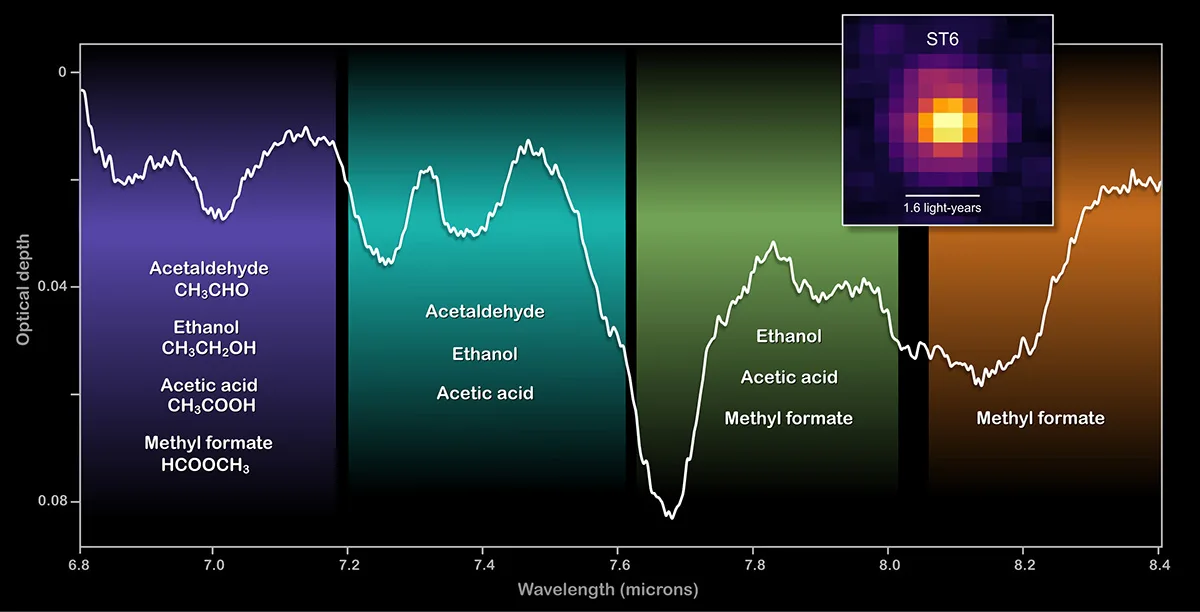
It also suggests that such molecules could survive around a still-forming star, then be assimilated into a planet orbiting that star.
Sewilo plans to carry out further studies of young stars in the Large Magellanic Cloud and the Small Magellanic Cloud, the next closest galaxy to Earth.
“We currently only have one source in the Large Magellanic Cloud and only four sources with detection of these complex organic molecules in ices in the Milky Way,” says Sewilo.
“We need larger samples from both to confirm our initial results that indicate differences in complex organic molecule abundances between these two galaxies.
“But with this discovery, we’ve made significant advancements in understanding how complex chemistry emerges in the universe and opening new possibilities for research into how life came to be.”
First Appeared on
Source link






